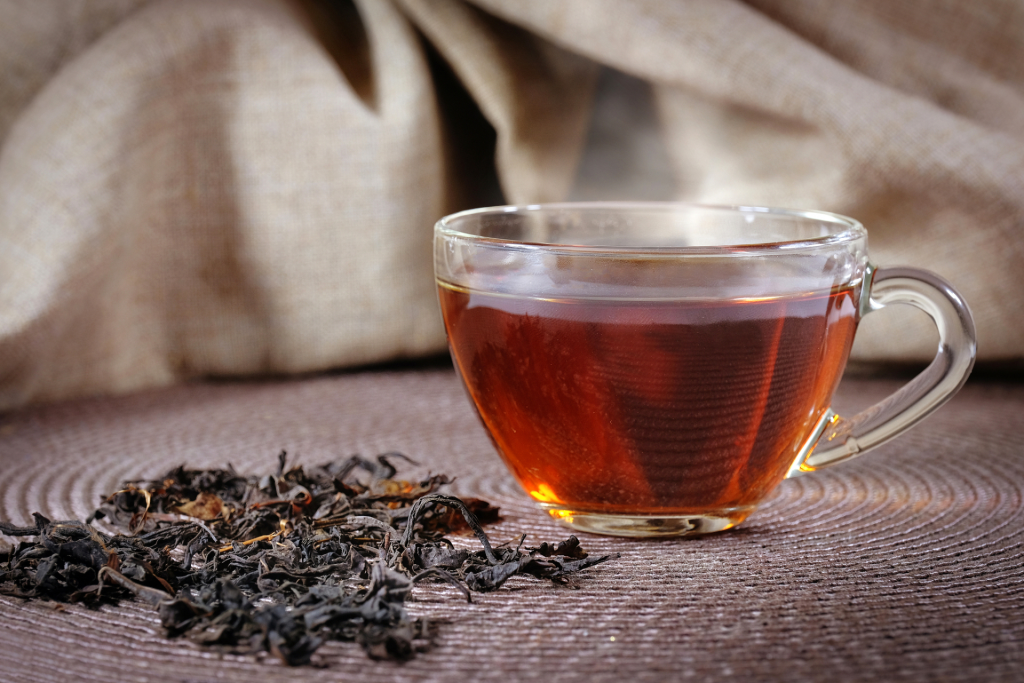China boasts a rich tea culture, with a variety of tea types categorized based on their fermentation levels. Among these, yellow tea and black tea stand out due to their unique characteristics and production processes. This article explores the differences and connections between yellow tea and black tea.

Yellow Tea: A Delicate and Unique Beverage
Yellow tea is characterized by its golden yellow leaves and liquor, giving it a distinctive appearance and flavor. The production of yellow tea involves several steps, including fixing, rolling, yellowing, and drying. The yellowing process, in particular, is crucial as it allows the tea leaves to undergo non-enzymatic oxidation under specific conditions, resulting in the tea’s unique yellow color and aroma.
Yellow tea is known for its mellow and slightly sweet taste, with a hint of caramel-like flavor. It is also believed to have various health benefits, such as aiding digestion and promoting weight loss. Hunan’s Yueyang City is renowned as the hometown of Chinese yellow tea, but it is also produced in other regions like Guizhou, Shanxi, Sichuan, Anhui, Shaoguan, Zhaoqing, and Zhanjiang.
Black Tea: A Full-Bodied and Aromatic Beverage
Black tea, on the other hand, is known for its robust flavor and rich aroma. Unlike yellow tea, black tea undergoes a full fermentation process, which significantly alters the chemical composition of the tea leaves. During fermentation, tea polyphenols undergo oxidation, reducing their content by over 90% and producing new compounds like theaflavins and thearubigins. This process gives black tea its characteristic red liquor, red leaves, and sweet, mellow taste.
The production of black tea involves several steps, including withering, rolling, fermentation, and drying. The fermentation process is particularly important as it is responsible for forming the tea’s unique color, aroma, and taste. Black tea is produced worldwide, with significant production in countries like India, East Africa, Indonesia, and Sri Lanka, apart from China.
Differences in Production and Characteristics
The main difference between yellow tea and black tea lies in their production processes and resulting characteristics. Yellow tea undergoes a light fermentation process with an emphasis on the yellowing step, which gives it its golden hue and mellow taste. Black tea, however, undergoes a full fermentation process, resulting in its dark leaves and rich, full-bodied flavor.
Additionally, yellow tea is often described as having a milder and sweeter taste compared to black tea, which is more robust and aromatic. The health benefits of both teas may also differ slightly, with yellow tea being associated with digestion and weight loss, while black tea is rich in nutrients like carotenoids, vitamins, and minerals.
Connections and Similarities
Despite their differences, yellow tea and black tea share some similarities. Both teas are derived from the Camellia sinensis plant and undergo various processing steps to achieve their final form. They also both contain beneficial compounds like antioxidants, which can contribute to overall health and well-being.
Moreover, both yellow tea and black tea have a rich history and cultural significance in China and other tea-producing countries. They are enjoyed in various forms, such as plain tea, tea with milk and sugar, or as part of traditional tea ceremonies.
In conclusion, yellow tea and black tea are two distinct types of tea with unique characteristics and production processes. While they differ in taste, appearance, and potential health benefits, they both share a rich history and cultural significance in the world of tea. Whether you prefer the mellow sweetness of yellow tea or the robust aroma of black tea, both offer a delightful and refreshing way to enjoy the benefits of tea.



